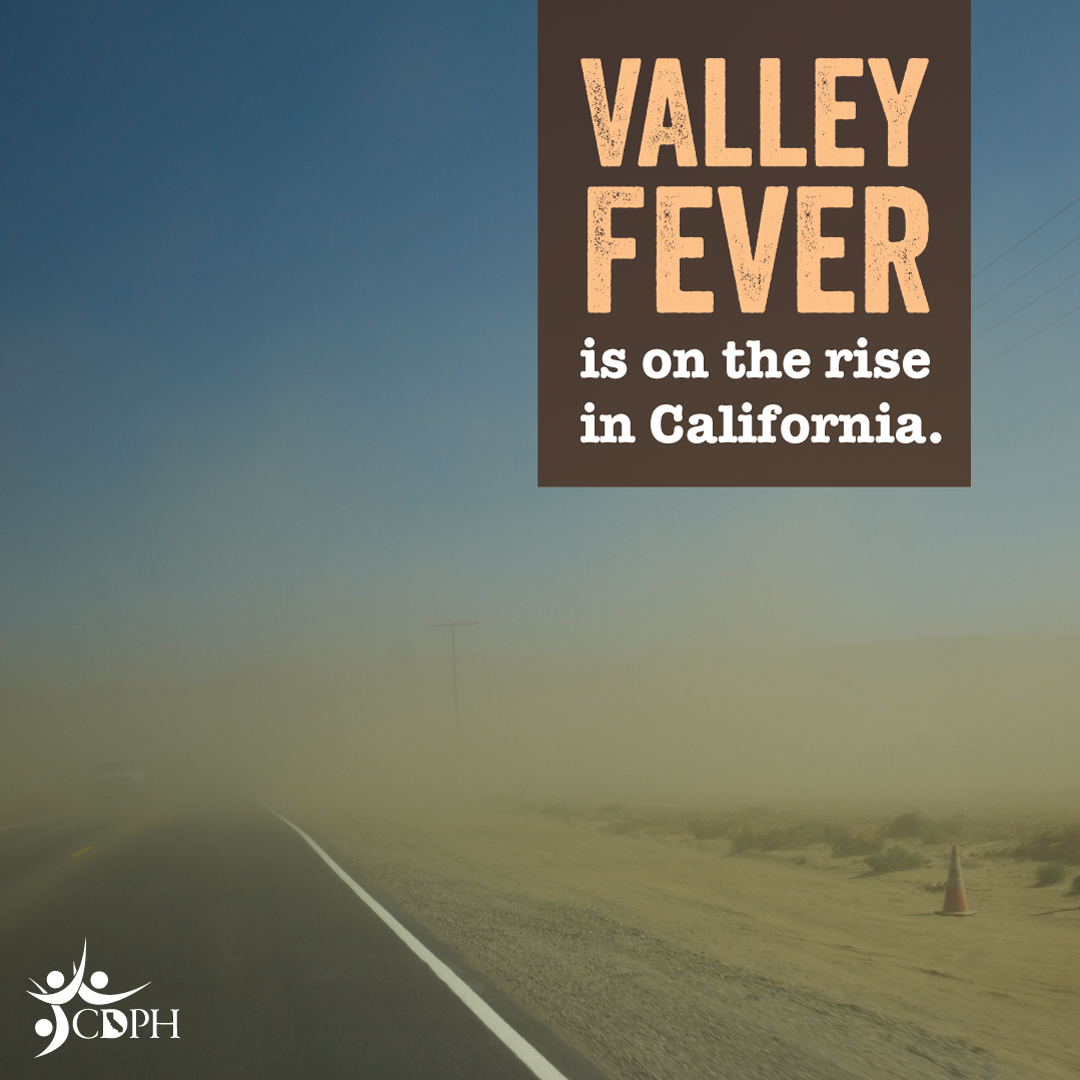
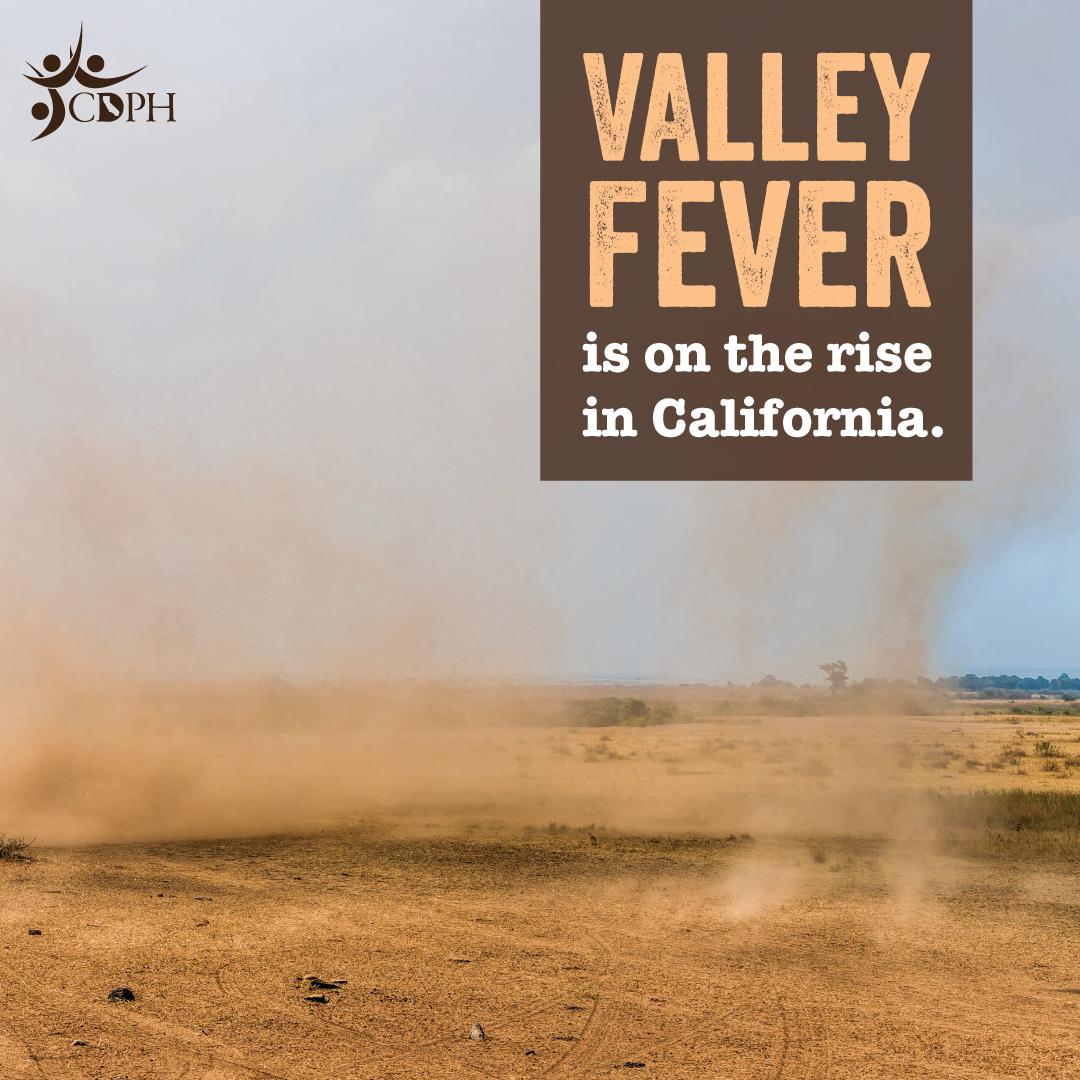
|
Suggested messages:
-
Cases of Valley fever in California nearly tripled from 2015 to 2019. Get prevention tips and learn more about #ValleyFever and where it is most common:
https://bit.ly/VFBasics
-
Valley fever cases in California increase after a rainy winter that follows a drought. #ValleyFever can cause lasting symptoms such as fever, cough, and tiredness. Learn practical tips for prevention:
https://bit.ly/VFPreventionTips
- In certain parts of California, breathing in dust or dirt outdoors can increase your risk of getting Valley fever, a disease caused by a fungus that lives in the dirt in parts of the state. Learn more about #ValleyFever and where it is most common:
https://www.cdph.ca.gov/ValleyFever
|
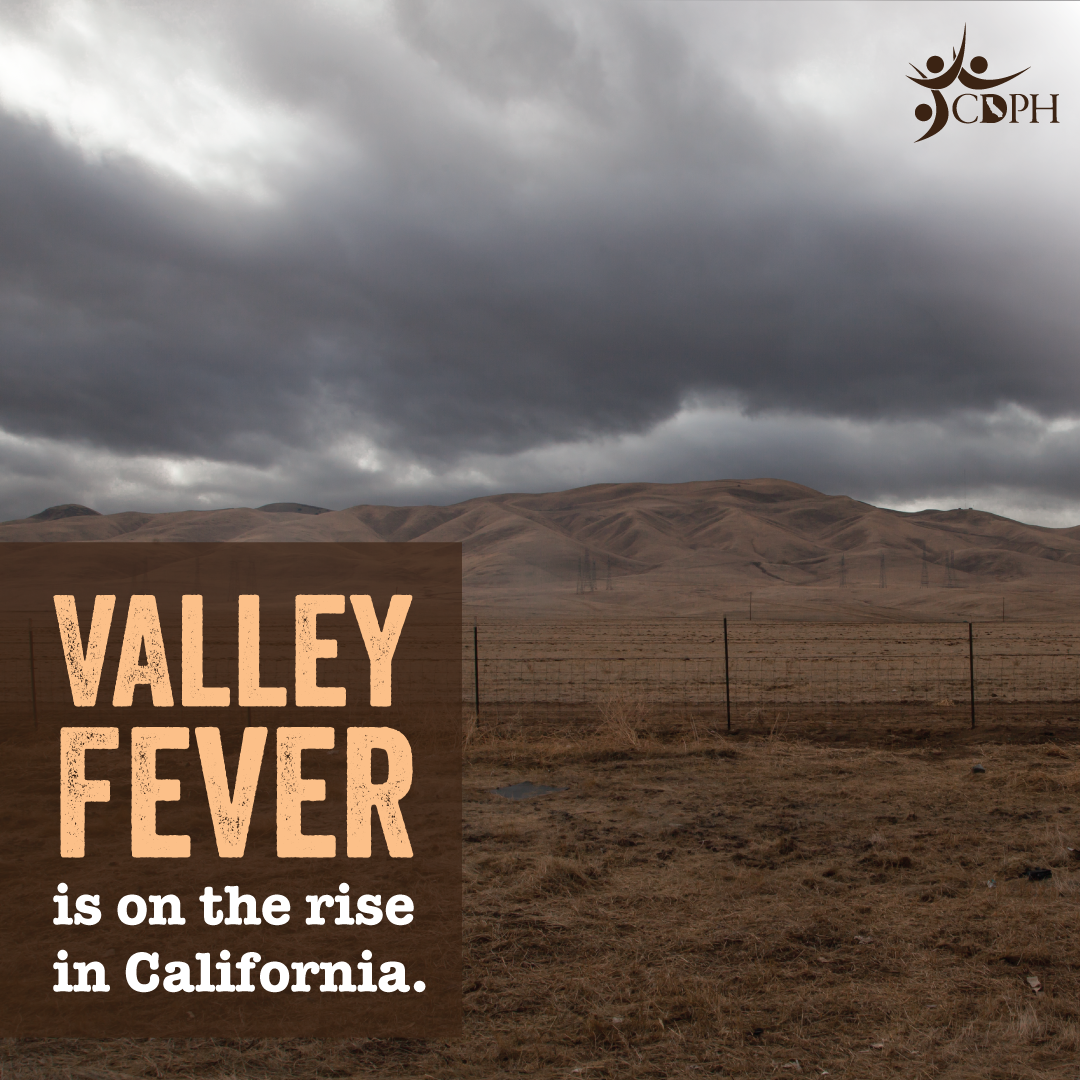
|
Suggested message:
Rainy weather following a drought creates the right conditions for the Valley fever fungus to thrive. Valley fever can cause cough, fever, and tiredness that can last for weeks. Protect yourself from dust and dirt in outdoor air that can cause #ValleyFever. In areas where Valley fever is common, stay indoors during windy and dusty days, and wet down soil before digging. Learn more: https://www.cdph.ca.gov/ValleyFever
|
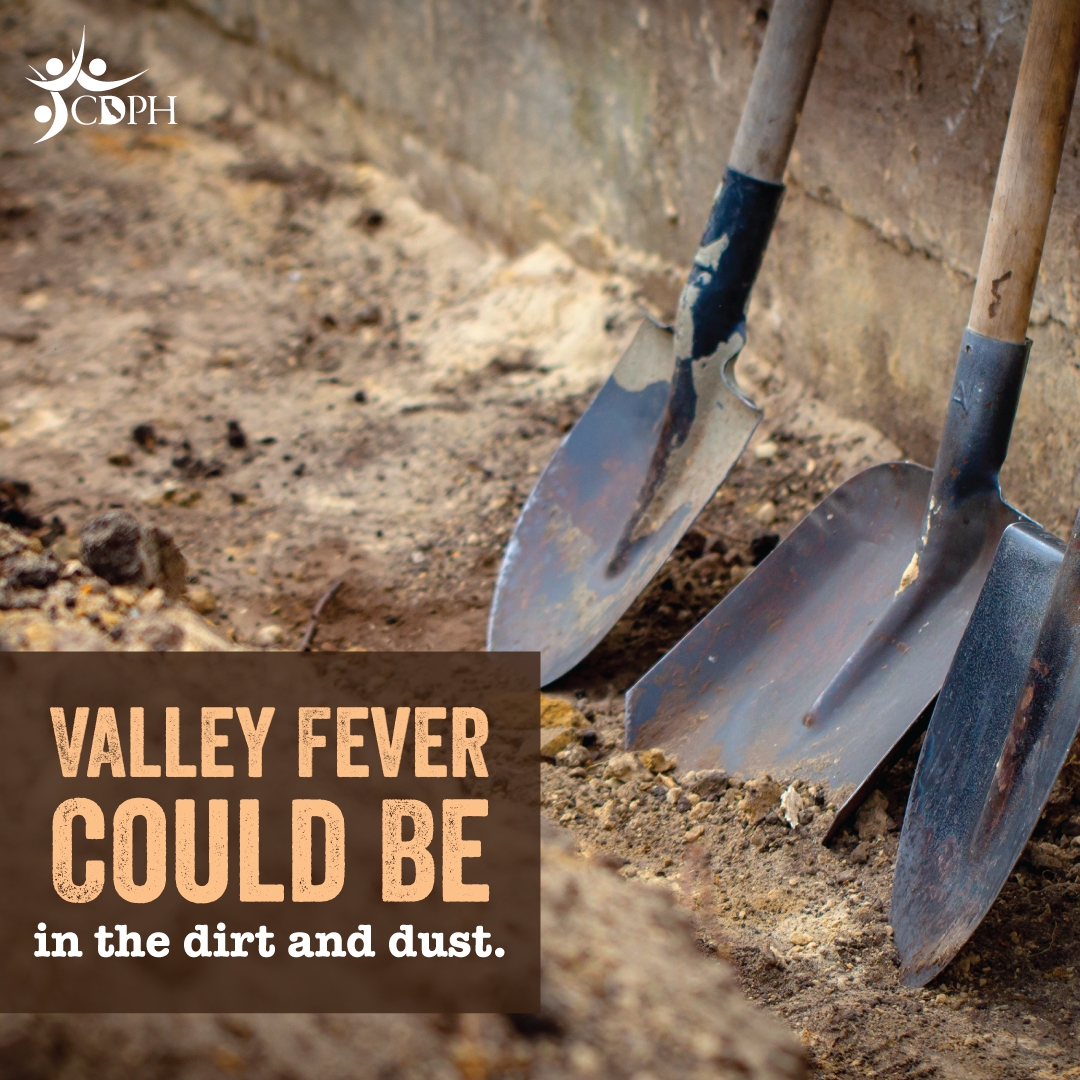
|
Suggested message:
Valley fever is caused by breathing in dust that contains spores of a fungus. In areas where Valley fever is common, wet down dirt before digging to help reduce dust. Learn more prevention tips and where in California #ValleyFever is common:
www.CouldBeValleyFever.org
#ValleyFeverAwareness
|
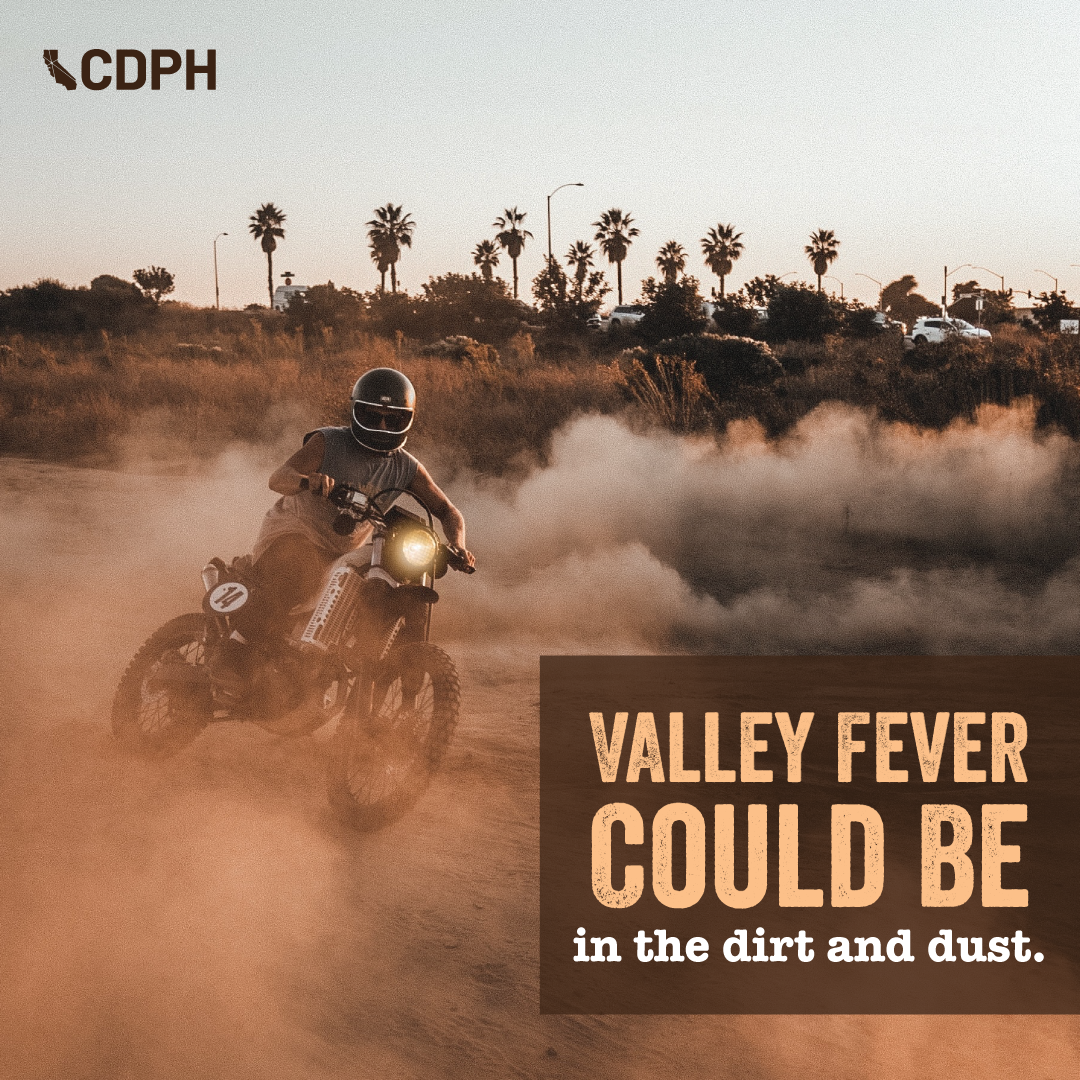
|
Suggested message:
With summer comes drier, dusty days in California. In certain parts of the state, breathing in dust or dirt outdoors can increase your risk of getting #ValleyFever, a disease caused by a fungus that lives in the dirt in parts of California. Symptoms can include fever, cough, and tiredness that last for weeks. Learn more about Valley fever and where it is most common: https://bit.ly/VFBasics
|
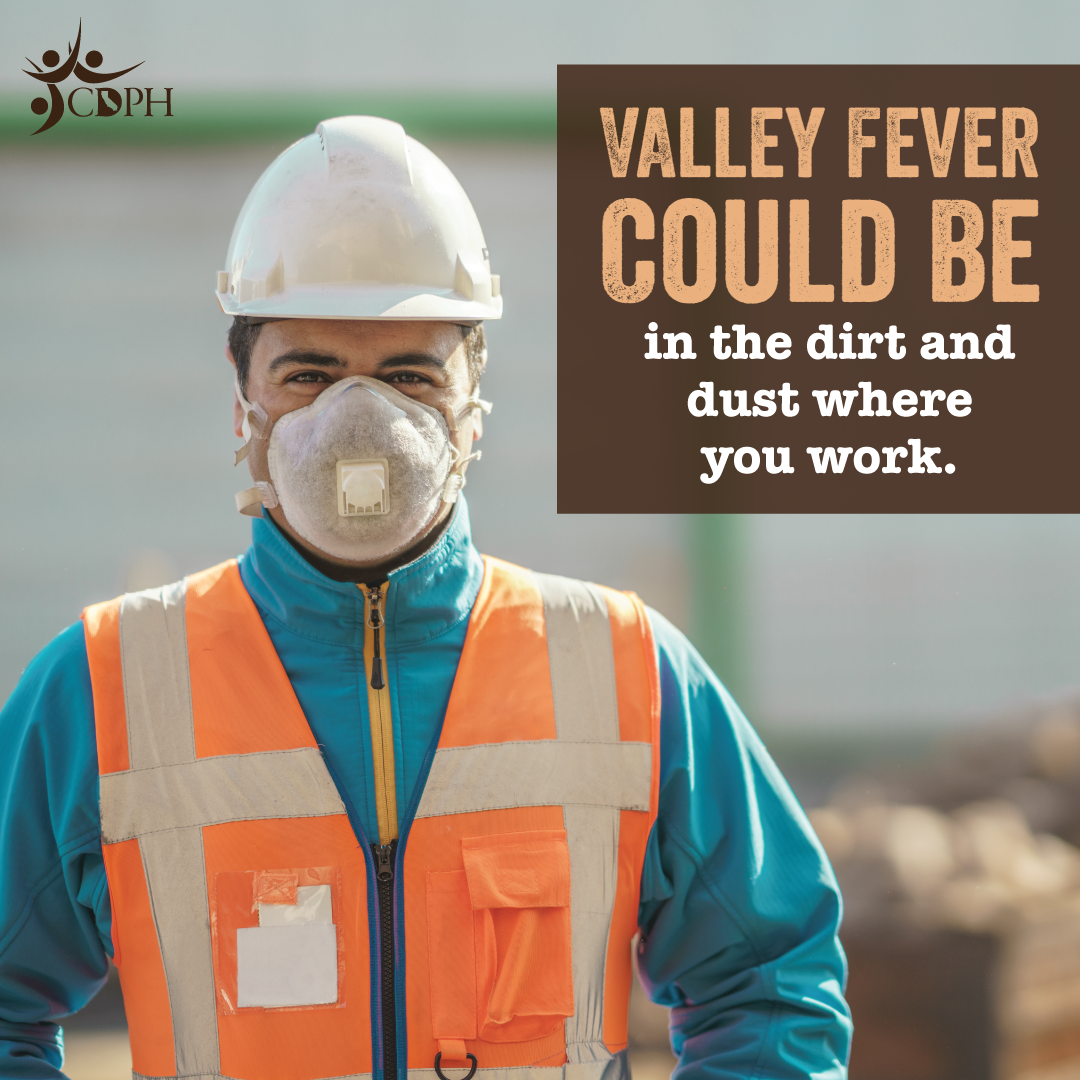
|
Suggested messages:
- #ValleyFever is caused by a fungus found in soil in parts of California. People who work outdoors in these areas are at risk if they dig or disturb soil or work in windy conditions. Reduce your risk by wetting down soil before digging and using a NIOSH-approved respirator when working in dusty areas. Learn more:
https://bit.ly/VfAtWork
- People who work outdoors are at risk for #ValleyFever if they work in dusty conditions in certain parts of California. Reduce your risk by wetting down soil before digging and using a NIOSH-approved respirator to help prevent breathing dust. Learn more: https://bit.ly/VfAtWork
|
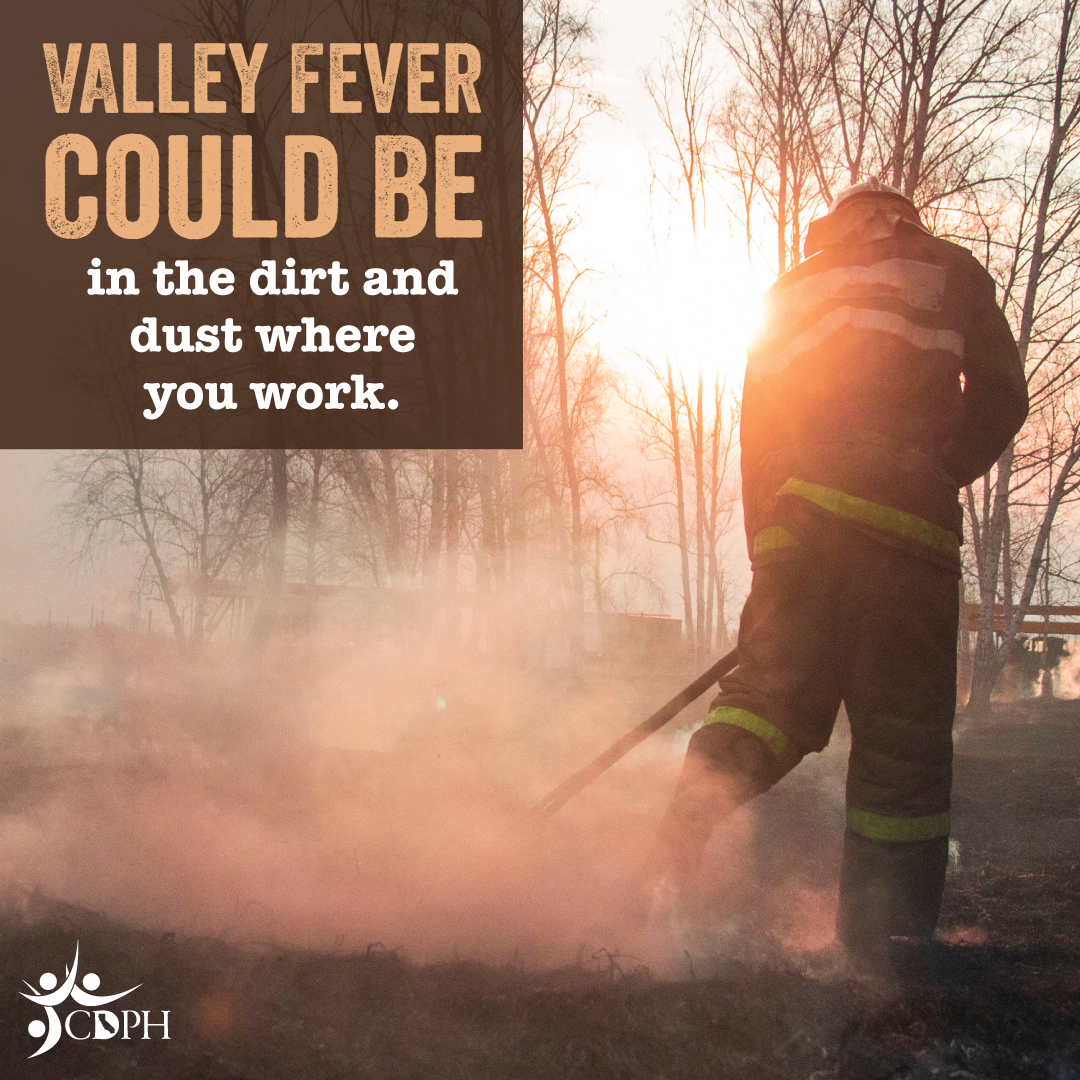
|
Suggested message:
The Valley fever fungus can infect people who work or dig outdoors in certain areas in California. In 2021, several members of a wildland firefighter crew got Valley fever after digging and moving soil to control a fire. Fire safety crews should learn about #ValleyFever and steps for protection: https://bit.ly/VfFireTraining
|
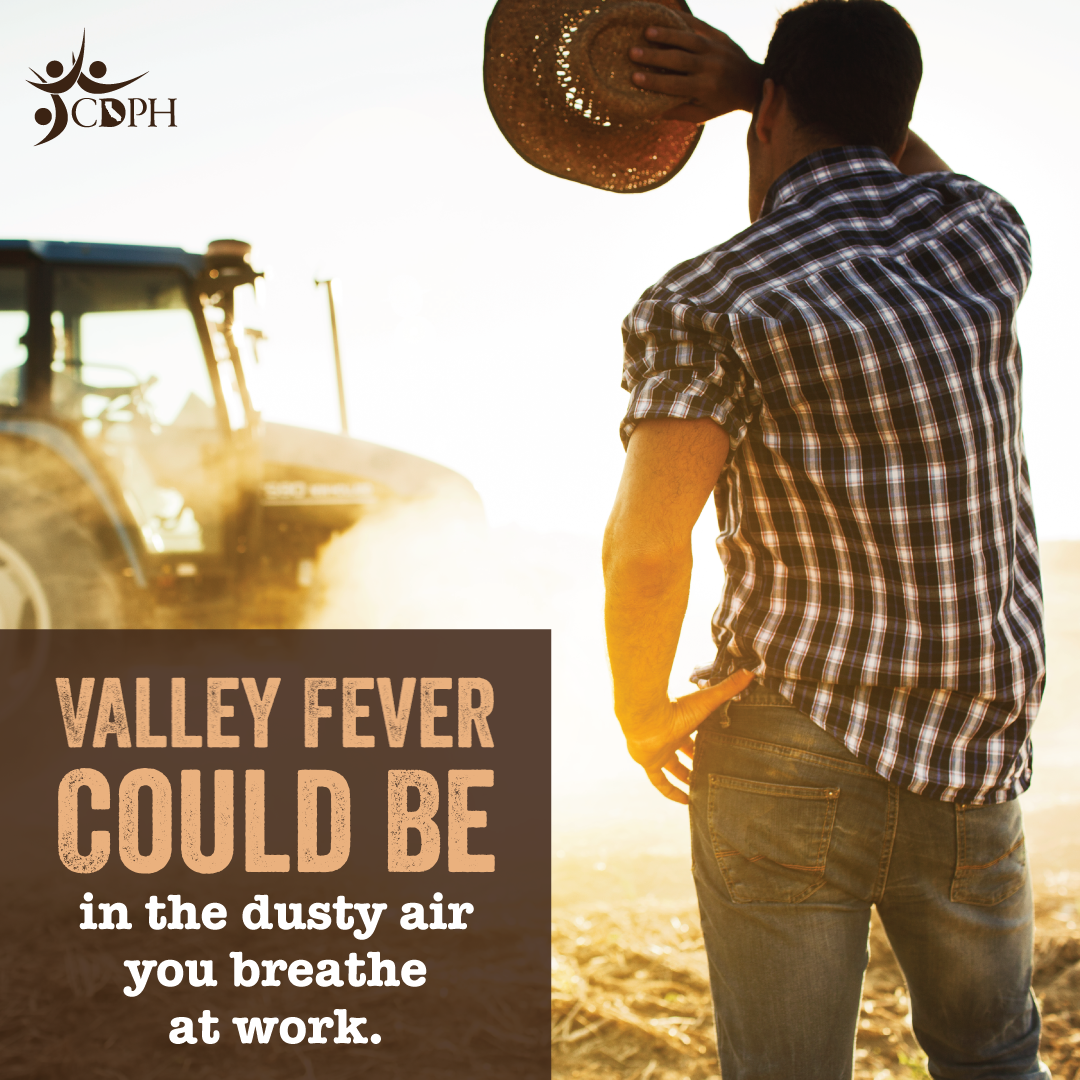
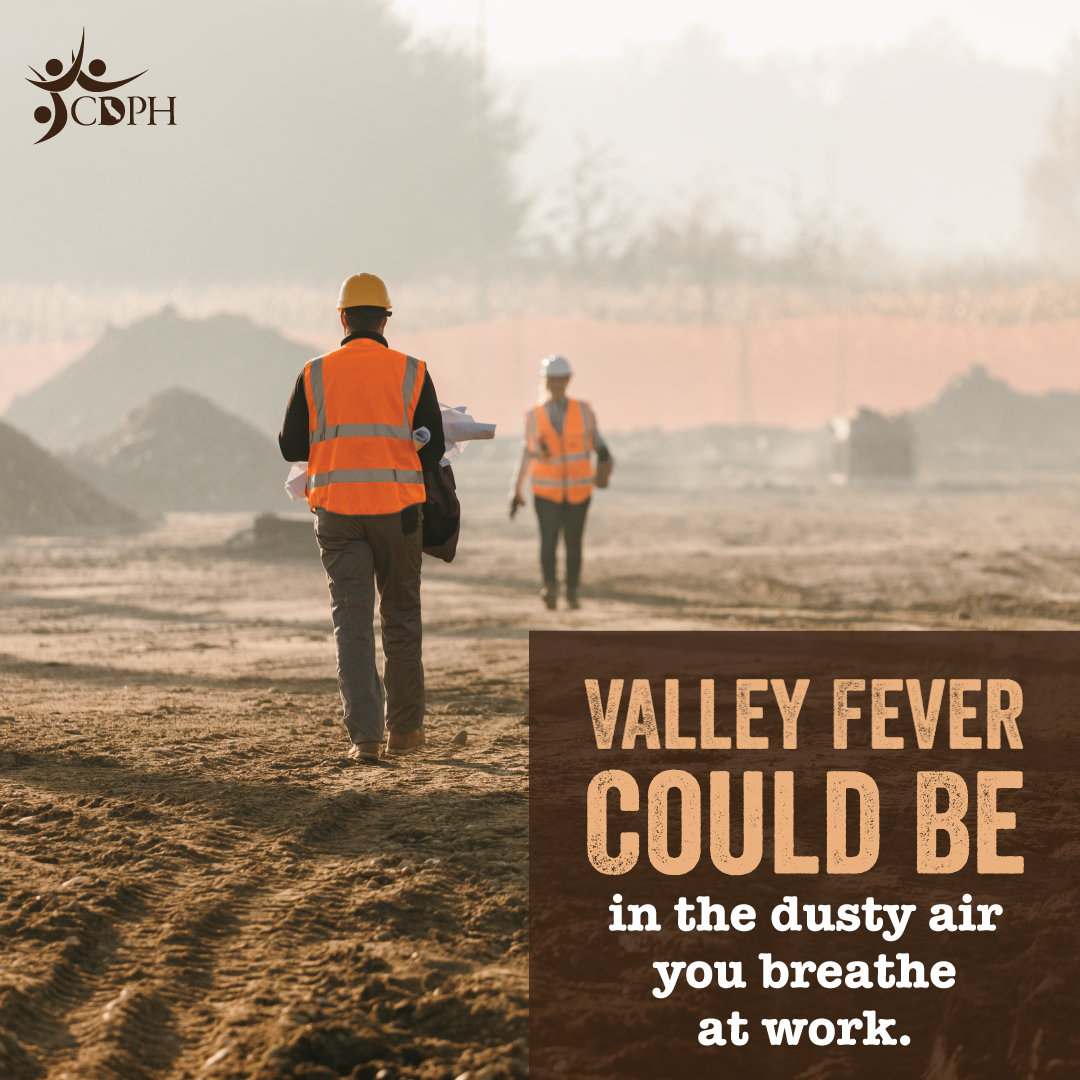
|
Suggested message:
Working outside in some dusty areas could increase your chances of getting #ValleyFever, a potentially serious illness. Reduce your risk by wetting down soil before digging and staying upwind of areas where dirt is being disturbed. https://bit.ly/VfAtWork
#ValleyFeverAwareness
|
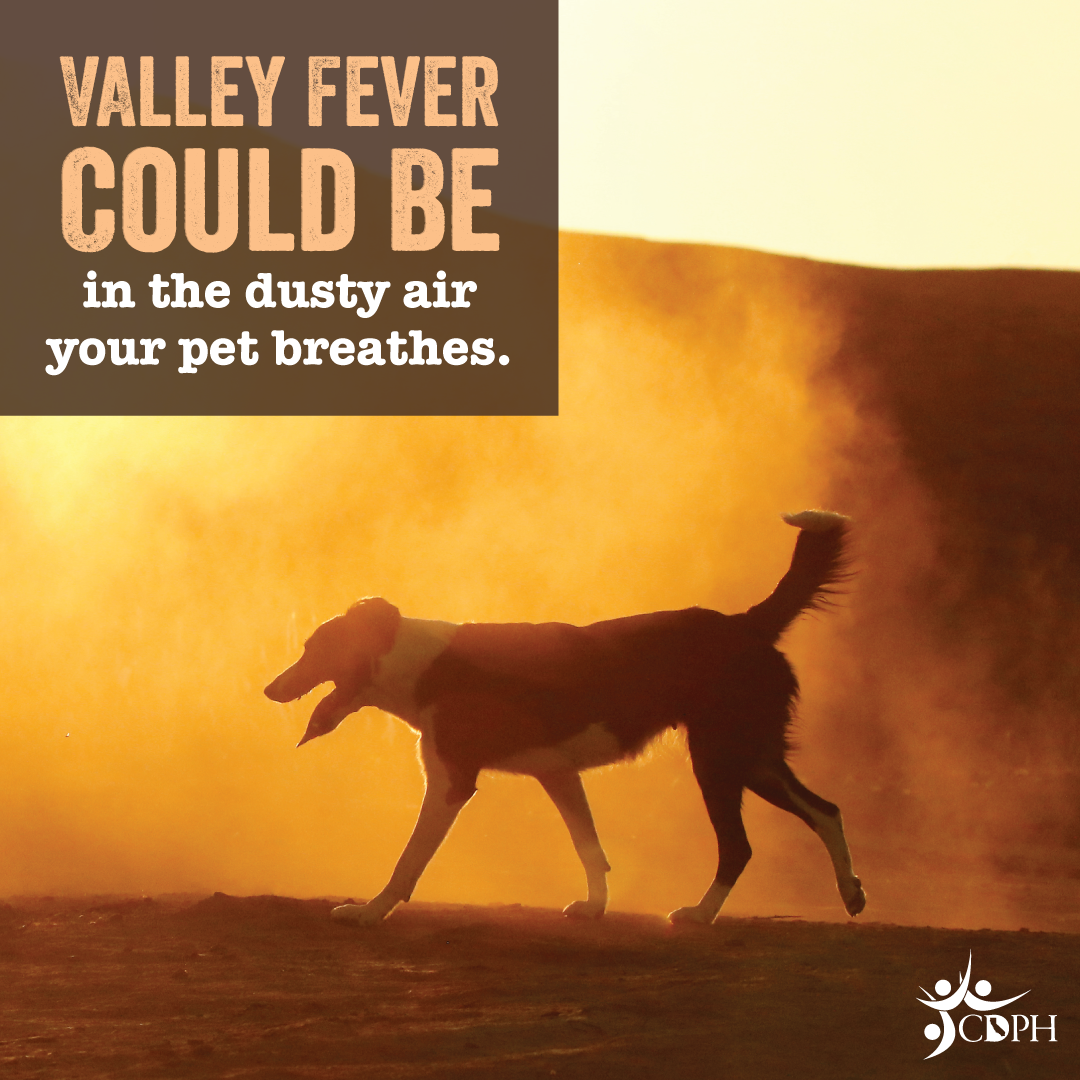
|
Suggested message:
People and pets can get Valley fever by breathing in the Valley fever fungus from outdoor dust and dirt. Take steps to protect yourself and your pets from breathing in dust outdoors – especially if you live in areas where #ValleyFever is common, like the Central Valley and Central Coast:
- Stay inside during dust storms
- Cover open dirt areas around your home with grass or gravel
- Keep pets from digging in the dirt
Learn more: https://bit.ly/VFinPets
|

|
Suggested message:
Valley fever and COVID-19 share many of the same symptoms, including fever, cough, fatigue, and body aches. But symptoms of Valley fever can last for weeks. Different lab tests are needed to know whether symptoms are caused by #COVID19 or #ValleyFever. Learn more:
https://bit.ly/VFSymptoms
#ValleyFeverAwareness
|


|
Suggested messages:
- If you’ve tested negative for #COVID19 but still have a cough that has lingered for over a week, ask a healthcare provider about Valley fever. Lasting aches and pains, fever, fatigue, and coughing could be symptoms of #ValleyFever, which is caused by breathing in a fungus found in outdoor dust.
https://bit.ly/VFSymptoms
#ValleyFeverAwareness
- If you have a lingering cough after exposure to dust outdoors, ask a healthcare provider about #ValleyFever. Lasting aches and pains, fever, fatigue, and coughing could be symptoms of Valley fever (which is caused by breathing in a fungus). https://bit.ly/VFSymptoms
#ValleyFeverAwareness
|


|
Suggested message:
Pregnant women, older adults, people who are Black or Filipino, and those with diabetes are at greater risk of getting very sick from Valley fever. If you have a cough, fever, and fatigue that wo’t go away AND you’ve tested negative for #COVID19, ask a doctor if it could be #ValleyFever. Learn who’s most at risk:
www.CouldBeValleyFever.org
|

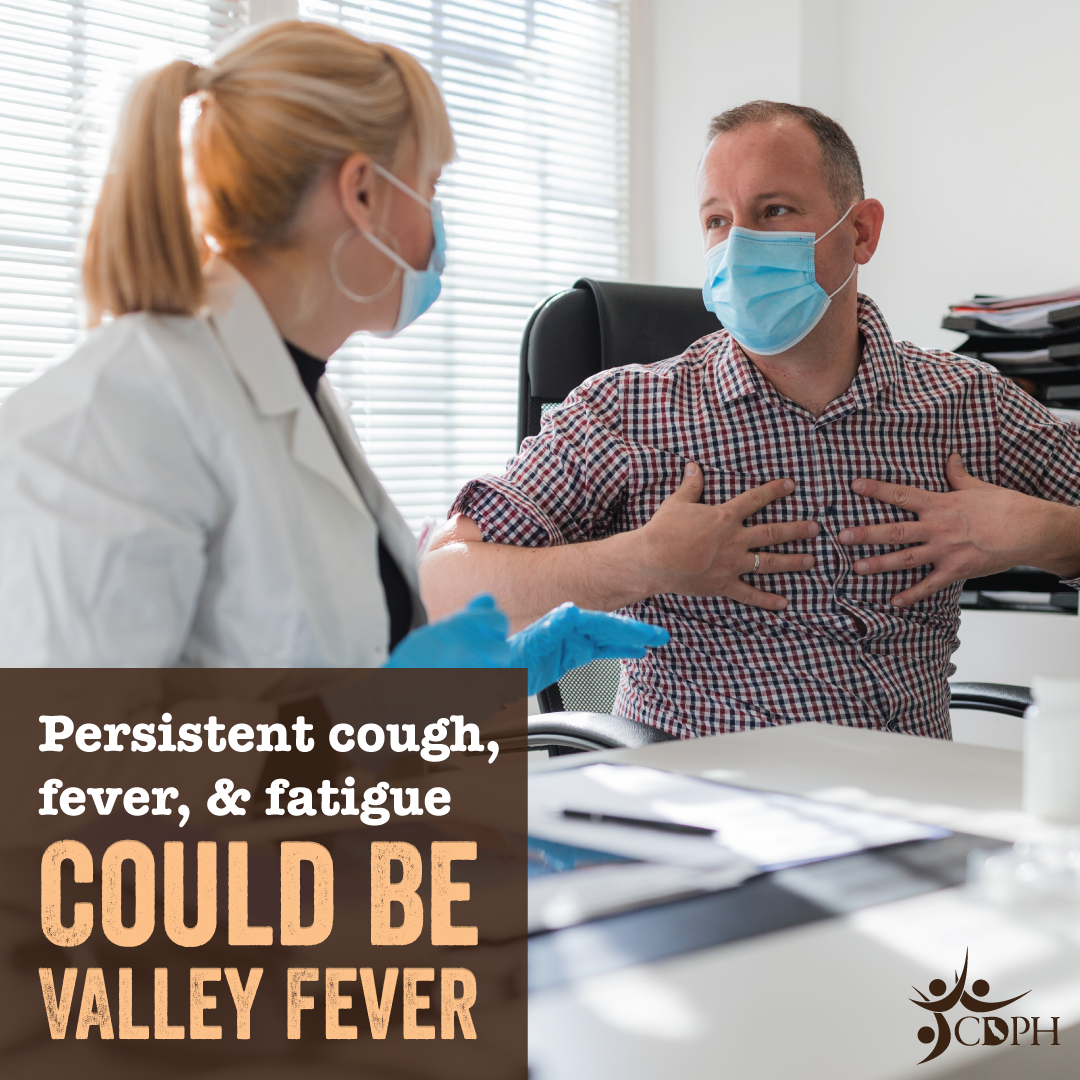
|
Suggested message:
Tested negative for #COVID19, but have a cough or fever that’s lasted longer than a week? It could be Valley fever. Talk to a doctor and tell them if you’ve recently been to areas where #ValleyFever is common, or if you’ve been in a dusty area. Learn more:
www.CouldBeValleyFever.org
#ValleyFeverAwareness
|